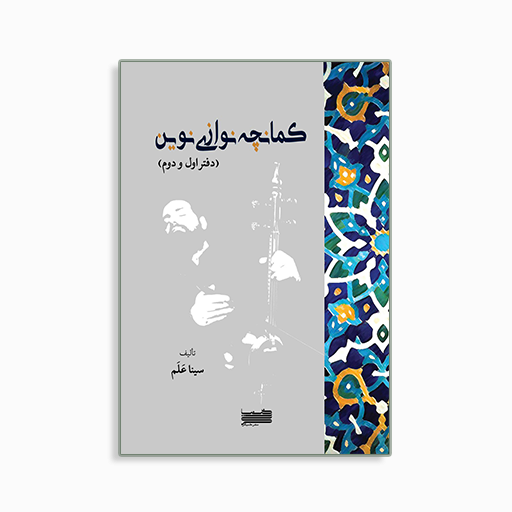Product details
- Publisher : Kidsocado (April 26, 2020)
- Language : Persian
- Paperback : 300 pages
- ISBN-10 : 1989880061
- ISBN-13 : 978-1989880067
- Item Weight : 1.06 pounds
- Dimensions : 6.69 x 0.63 x 9.61 inches
In this book, I have endeavored to introduce the kamancheh as a complete and authentic bowed instrument, and to create a character for it as much as possible. Additionally, I aimed to solve a very important issue that composers and performers have struggled with for years - the transferability of the kamancheh. The major mistake that made composition and playing difficult was the transitional approach to this instrument, which I have addressed impartially in the book to solve this problem.
Writing etudes, which are introduced in the first notebook under the name "Challenges," and duets for two kamanchehs to fill the void, are among the other goals of this book. It is worth mentioning that the pieces included in this book without a source reference are composed by the author. It should be noted that my approach to composing pieces has been purely etude-like and instructional.
Intro By Hooman Khalaabari:

The kamancheh is one of the most important, authentic, and ancient bowed instruments prevalent in Iran and the world, with a detailed indigenous-cultural history in the chronicles of Iranian peoples. Regardless of the differences in tuning systems, the unique indigenous structure of the instrument, and its performance techniques in various regions of Iran, kamancheh is a powerful, complete, and effective instrument in expressing the performer's emotions. The most prominent use of the kamancheh in the history of Iranian music can be found in improvisation, accompanying vocals, and sometimes in ensemble performances with national instruments, and even its use in international ensembles. Sina Alam strives to broaden the practical application of this complete bowed instrument by inventing and introducing a novel educational method for the kamancheh, viewing it as a non-transitional instrument (out), and elucidating and describing the common terms in Western classical music notation, thereby enhancing the scope of kamancheh's application to the realm of intense duets and orchestral performances. Sina Alam's exceptional efforts are not only enlightening for students and players of this instrument but may also pave the way for future Iranian polyphonic music composers. In addition to his outstanding abilities and brilliant technique in playing the kamancheh (both in solo and group performances), his expertise, experience, and innovation in the field of composition and arrangement (including writing complete scores for his works) have established him as a guiding light in kamancheh education. His endeavor to impart the essence of his experiences to novice learners in this book is a testament to his musical prowess. Expanding the knowledge and practice of learning and performing the kamancheh is a creative service to Iranian music and culture, ultimately contributing to the revival of ancient Iranian art in a positive way. Best wishes to Sina Alam and all novice learners, enthusiasts, and guardians of this ancient culture.
